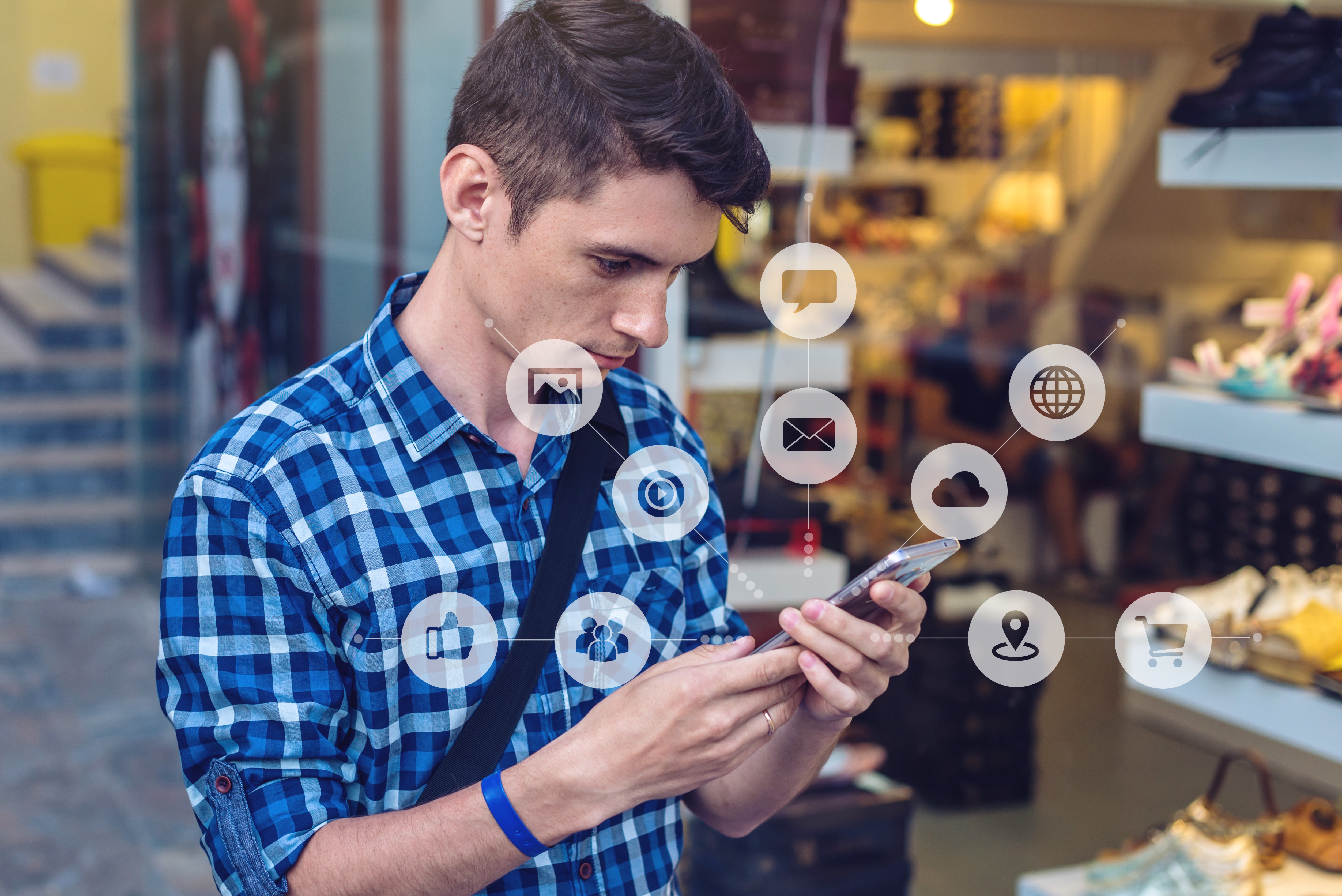From retargeting to social media, digital advertising, content marketing, email marketing and more, most retailers have already maximized their use of online marketing and its corresponding data.
With the relative ease and effectiveness of online marketing, it's no surprise that Gartner's recent CMO Spend Survey found that analytics, web, and digital ads were the top places marketers planned to invest in 2018. Although online marketing is a proven channel, however, it's also a highly saturated one. That can make it hard for retailers to stand out—particularly as higher levels of personalization and "wow" factors pop up everywhere.
Linking the physical and digital is a tremendous opportunity for retailers
Forward-looking retailers are trying to find new competitive advantages by focusing their spending in a new (old) channel—the store itself. But there's a twist. In order to make this successful, it must be digitized.
The distinctly offline, brick-and-mortar store has long been a barrier to delivering a fully connected, omnichannel experience. But with the rise of the Internet of Things (IoT), that's changing. Smart devices can enable self checkout, optimize store layout and improve customer-relationship management. The physical store could soon be generating an incredible amount of data that can be used to drive more opportunities than ever before.
Here are just a few types of data that will help retail marketers drive results:
In-store shopper traffic data
How many in-store visits can be attributed to your expensive window display? Is the messaging doing its job? Are the promoted products easy to find?
The physical store has long been a black hole, rife with guesswork. There hasn't been a reliable way to automatically track the number of customers that visit the store, for example, much less the conversion rates from visitor to purchaser, the number of repeat visits versus first-time visits, or any basic information about what led shoppers to actually make a purchase.
With a host of IoT devices, like aisle-analytics software, infrared sensors that can track customer movement to identify where time is spent, or facial recognition software that can match users to a unique customer segment, retailers have more ammo than ever before to understand what kinds of behaviors are exhibited in the store, what promotions, layouts, and merchandise drive the most results, and what activities get the most visitors to buy.
Conversational data
Each day, hundreds--if not thousands--of conversations are generated in the store. While interacting with in-store reps, shoppers may ask about inventory, request new products, express confusion about a promotion, and more. Imagine if that data could be captured, analyzed and acted upon.
Retailers are beginning to use smart kiosks and even humanoid robots to capture customer communications in a trackable, measurable way. Progress in this area is furthered as voice technologies mature (for example, Microsoft announced in 2017 that its speech recognition software had reached human-level error rates).
Superior voice technology plus an AI-enabled back end will make it possible for retailer marketers to truly get a sense of customer sentiment, common questions and challenges, and more.
Channel-to-store conversion data
Today, it's relatively easy to see how online efforts lead to e-commerce purchases. But how do retailers measure how these efforts translate to purchases made in the store?
Most retailers aren't sure which promotions and incentives are the most likely to get specific customers in the door. But being able to tie point-of-sale data to experiential data, mobile use and more will transform the way the in-store piece of a campaign is managed.
One great example of a company doing this well is Rebecca Minkoff. This brand really understands the importance of taking technology beyond the "cool factor" to making it useful for businesses and driving customer engagement. It is introducing interactive dressing rooms and 3-D fashion shows to engage customers in the store. The brand feels so strongly that what happens online leads to the store (and vice versa) that it has updated its commission strategy to reflect it, giving sales reps commission for online sales made within six months of visiting the store. The brand reported triple-digit growth in 2017.
Original article: https://adage.com/article/opinion/3-types-iot-data-retailers-improve-marketing-results/314769/
Come hear Kass Dawson discuss the near future of human-robot interactions as one of a powerful group of innovators, founders, CEOs, researchers and marketing leaders set to look over the horizon at Ad Age Next this Nov. 13 and 14 at New World Stages in New York. Get all the info right here.







